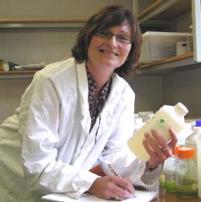Water quality, seaweed and seagrass changes could indicate sea-change pressures
Published on 06 September, 2006
Changes in water quality and the array of seaweeds and seagrasses could be useful in tracking the effects of rapid development on the Capricorn Coast.
That is according to Central Queensland University researcher Mary-Anne Jones, who is focusing her PhD study to establish baseline data on water quality and the array of seaweeds and seagrasses on the coast.
 The data will be gathered on a quarterly basis over a 2-year period, to ensure seasonal changes can be represented.
The data will be gathered on a quarterly basis over a 2-year period, to ensure seasonal changes can be represented.
The study will focus on four representative estuaries - the developing areas of Ross Creek, the Causeway Lake and Cawarral Creek and the pristine Corio Bay.
Ms Jones will present a talk on her research during the Fitzroy Basin Association's Neighbourhood Catchment Muster, from 10.30am on Friday, September 8, at Rockhampton's Leichhardt Hotel in Bolsover Street.
Her PhD is funded by an Australian Postgraduate Award, FBA and the Fitzroy River Coastal Catchment organisation.
"Elsewhere, catchment development has resulted in unwanted environmental consequences - for example, the proliferation of filamentous blue-green algae in Moreton Bay," she said.
"This project aims to establish and compare successional patterns of seaweeds and seagrasses in the 4 estuaries, the associated environmental conditions, the potential for nuisance blooms and possible implications for fisheries, human health, recreation and future development".

